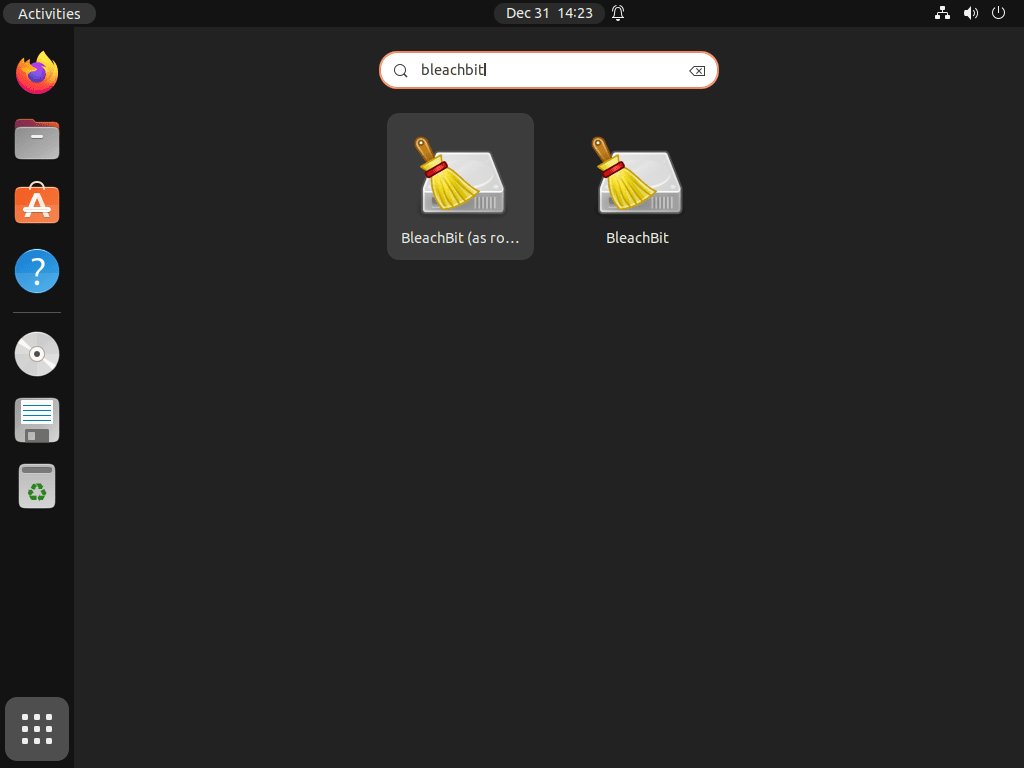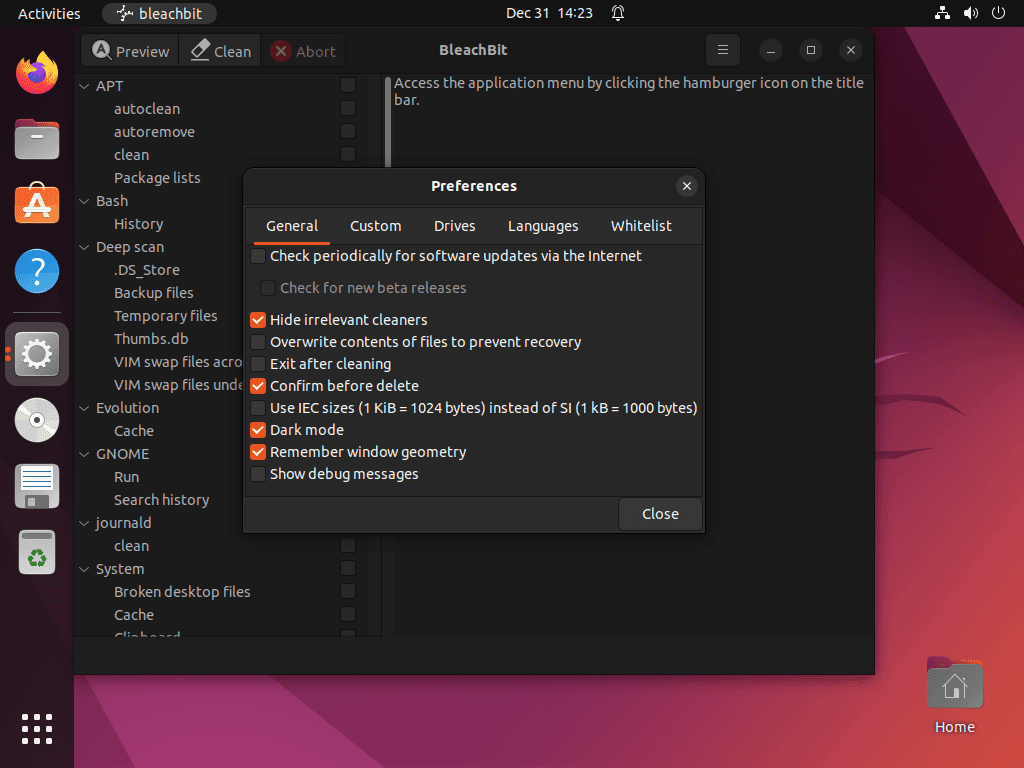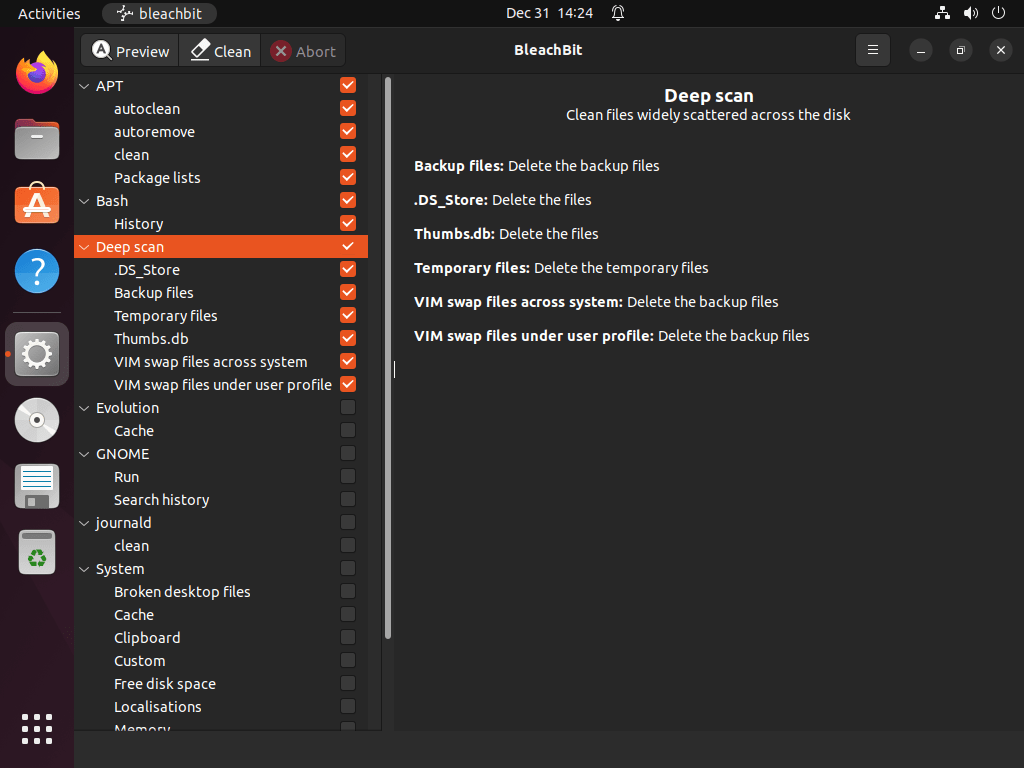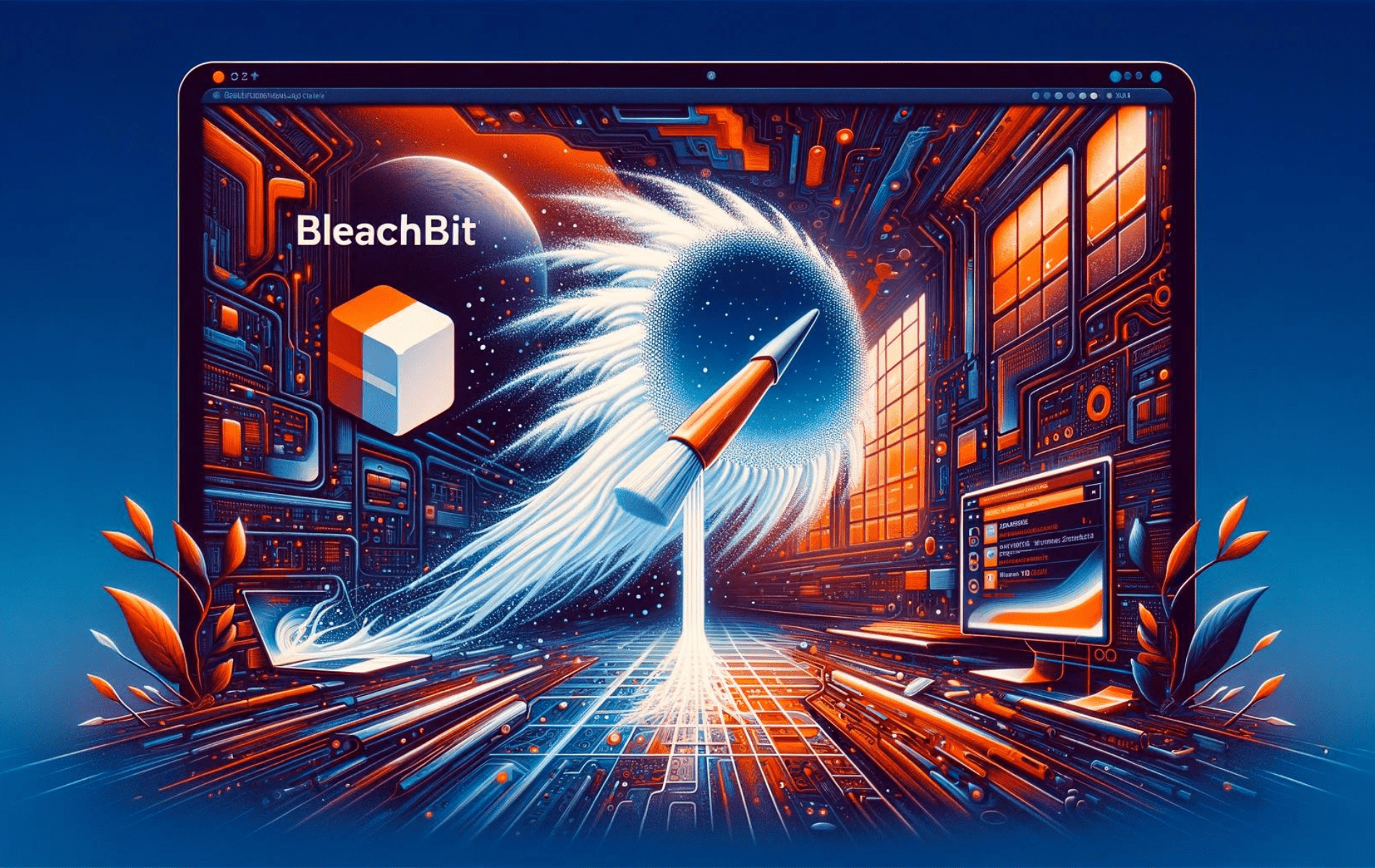Managing system performance and privacy can be challenging, but BleachBit simplifies the process with its powerful features. It helps you free up disk space, remove hidden junk files, and enhance system performance by clearing cache, deleting cookies, and more. With its straightforward yet robust functionality, BleachBit is designed to support novice users and seasoned professionals.
BleachBit offers several key features:
- Disk Space Recovery: Efficiently removes unnecessary files.
- Privacy Protection: Deletes logs, temporary files, and cookies.
- System Performance Boost: Cleans up browser history and cache.
- Customizable Cleaning: Offers options to clean specific files or entire directories.
- Cross-Platform Compatibility: Available for Windows and Linux systems.
Supported file types include:
- Temporary files: Short-lived data stored by applications.
- Cache files: Stored data to speed up software performance.
- System logs: Records of system activities and events.
- Browser history and cookies: Data from web browsing activities.
- Application-specific data: Residual files left by various applications.
With the introduction out of the way, let’s explore how to install BleachBit on Ubuntu 24.04, 22.04, or 20.04 LTS using the command-line terminal.
Method 1: Install BleachBit via APT
Update the Ubuntu System Before the BleachBit Installation
Before starting the installation process, updating your Ubuntu system is essential. This ensures that all packages are up-to-date, minimizing the chances of conflicts during the installation. To update your system, execute the following command:
sudo apt updateOnce the update process is complete, proceed to upgrade any outdated packages by running the following command:
sudo apt upgradeThis step ensures your system is most stable and secure before installing BleachBit.
Install BleachBit on Ubuntu via APT Command
BleachBit is available in Ubuntu’s default APT repositories, simplifying installation. To install BleachBit on your Ubuntu desktop, execute the following command:
sudo apt install bleachbit -yThis command retrieves and installs the BleachBit package from the official Ubuntu repositories. The -y flag automatically confirms the installation, streamlining the process.
Method 2: Install BleachBit via Flatpak and Flathub
This section will explore an alternative method for installing BleachBit using the Flatpak package manager. Flatpak is a popular option similar to Snap and is featured across many Linux distributions as a third-party installation package manager for obtaining the latest packages.
Note: If your system does not have Flatpak installed, please refer to our guide on “How to Install Flatpak on Ubuntu” for step-by-step instructions on installing the most recent supported version of Flatpak.
Enable Flathub Before BleachBit Installation
Before installing BleachBit through Flatpak, you must enable the Flathub repository, a primary source for Flatpak applications. To enable Flathub, execute the following command in your terminal:
sudo flatpak remote-add --if-not-exists flathub https://flathub.org/repo/flathub.flatpakrepoThis command adds the Flathub repository to your Flatpak configuration, ensuring you have access to various applications, including BleachBit.
Install BleachBit on Ubuntu via Flatpak Command
With Flathub enabled, you can now install BleachBit using the flatpak install command. Run the following command in your terminal:
flatpak install flathub org.bleachbit.BleachBitThis command installs BleachBit on your system using Flatpak, giving you an alternative installation method for this helpful cleaning tool.
Launch BleachBit via CLI or GUI
Once you’ve successfully installed BleachBit on your Ubuntu system, you can launch the application and use its powerful features. There are several ways to launch BleachBit, and we’ll explore two common methods.
CLI Methods to Launch BleachBit
For those who prefer working with the command line or already have a terminal window open, you can quickly launch BleachBit with the following command:
bleachbitThis command starts the BleachBit application, allowing you to access its features directly from the terminal. Alternatively, if you installed BleachBit using Flatpak, use the following alternative command:
flatpak run org.bleachbit.BleachBitGUI Method to Launch BleachBit
If you prefer using the graphical user interface (GUI) and don’t have a terminal window open, you can quickly locate and launch the BleachBit application through the following path:
Activities > Show Applications > BleachBit


Additional BleachBit Commands
This section will cover additional BleachBit commands that are useful for Ubuntu Linux users. We will discuss how to update and remove BleachBit from your system.
Update BleachBit
For most desktop users, BleachBit should update automatically with your system packages when using the APT package manager. However, if you want to check for updates manually, you can execute the following command in your terminal:
sudo apt update && sudo apt upgradeLastly, use the following command for any user that installed Bleachbit using the Flatpak method.
flatpak updateThese commands ensure that you’re using the latest version of BleachBit, which often contains bug fixes, improvements, and new features.
Remove BleachBit
If you decide that you no longer need BleachBit on your system and want to delete the software, follow the appropriate method based on your installation:
APT BleachBit Remove Command:
Use the following command to remove BleachBit along with all associated unused dependencies and any saved data created by the software:
sudo apt remove bleachbitFlatpak BleachBit Remove Command:
For users who installed BleachBit using the Flatpak method, execute the following command to remove the software:
flatpak uninstall com.github.bleachbit.BleachBitConclusion
In wrapping up, we’ve walked through installing BleachBit on Ubuntu, covering the APT method, direct downloads, and using Flatpak. Our final recommendation is to stick with the APT approach for simplicity and reliability, but the other methods are available if needed. BleachBit is excellent for keeping your system clean and maintaining privacy. Tailor it to your needs and enjoy a cleaner, faster Ubuntu experience. Thanks for sticking with us to the end!

